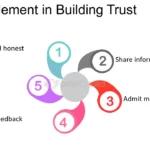Designing for conversion is a key focus for many web designers and marketers. Conversion-focused design aims to guide users toward taking specific actions, such as making a purchase, signing up for a newsletter, or filling out a form. By prioritizing user experience and employing targeted strategies, you can increase conversions and achieve your business goals. In this article, we’ll explore strategies and tips for designing for conversion.
1. Understand Your Audience
Before you can design for conversion, you need to understand your target audience’s needs, preferences, and behaviors. Conduct user research, create user personas, and gather data on user interactions with your website. This information will help you tailor your design to better resonate with your audience and address their pain points.
2. Establish Clear Goals and Metrics
Set specific, measurable goals for your conversions, such as the number of sign-ups or purchases. Establish key performance indicators (KPIs) to track your progress, and use analytics tools to monitor user behavior and identify areas for improvement.
3. Create a Clear and Simple User Journey
Design a user journey that is intuitive and easy to follow. Minimize the number of steps required to complete a conversion, and use clear navigation and labeling to guide users through the process. Streamline forms and checkout processes to reduce friction and improve completion rates.
4. Optimize Call-to-Actions (CTAs)
CTAs play a crucial role in driving conversions. Use action-oriented language that clearly conveys the benefit of taking the desired action (e.g., “Get Started,” “Buy Now,” “Subscribe Today”). Make CTAs visually distinct through contrasting colors, shapes, and positioning to draw attention.
5. Leverage Persuasive Design Elements
Use persuasive design elements to influence user behavior and encourage conversions. These elements may include:
- Scarcity: Create a sense of urgency with limited-time offers or low stock indicators.
- Social Proof: Display testimonials, reviews, or case studies to build trust and credibility.
- Trust Signals: Include trust badges, security seals, or certifications to reassure users.
- Incentives: Offer discounts, free trials, or other incentives to encourage action.
6. Use Visual Hierarchy
Establish a visual hierarchy that guides users to key conversion points. Use font sizes, colors, and spacing to emphasize important elements, such as CTAs and key messages. A clear visual hierarchy helps users understand what to focus on and where to go next.
7. Optimize for Mobile Devices
Ensure your website and conversion paths are optimized for mobile devices. Test your design across different screen sizes and devices to ensure a seamless and user-friendly experience. Mobile optimization is essential, as more users access websites on mobile devices.
8. Implement A/B Testing
A/B testing allows you to compare different design elements, such as CTAs, layouts, or copy, to determine which variations perform best. Continuously test and iterate your design based on data-driven insights to optimize conversion rates.
9. Improve Page Load Speed
Slow-loading pages can lead to high bounce rates and reduced conversions. Optimize your website’s performance by compressing images, minifying code, and leveraging browser caching. A fast-loading website enhances the user experience and boosts conversions.
10. Provide Excellent User Experience
A positive user experience is key to driving conversions. Ensure your website is easy to navigate, with clear and concise content that answers users’ questions and addresses their needs. Prioritize accessibility and usability to cater to all users.
Conclusion
Designing for conversion requires a strategic approach that focuses on user needs, preferences, and behaviors. By understanding your audience, optimizing CTAs, leveraging persuasive design elements, and continuously testing and iterating, you can create a design that drives conversions and achieves your business goals. Prioritize user experience, mobile optimization, and fast-loading pages to enhance the overall experience and maximize conversion rates.


